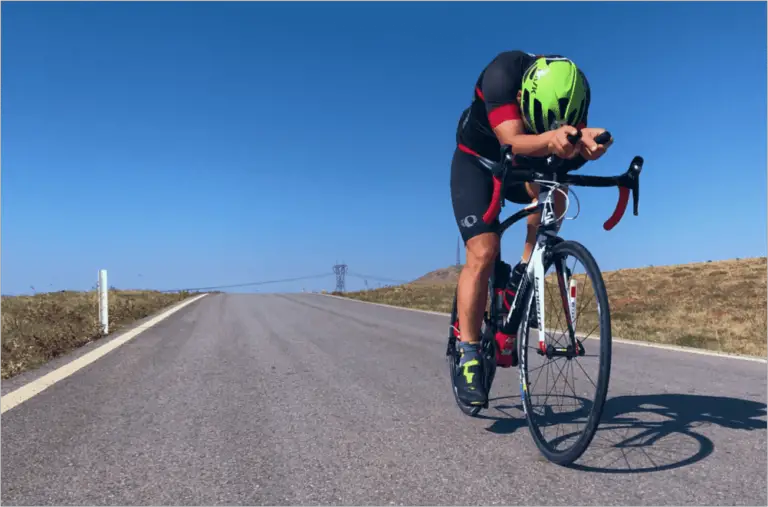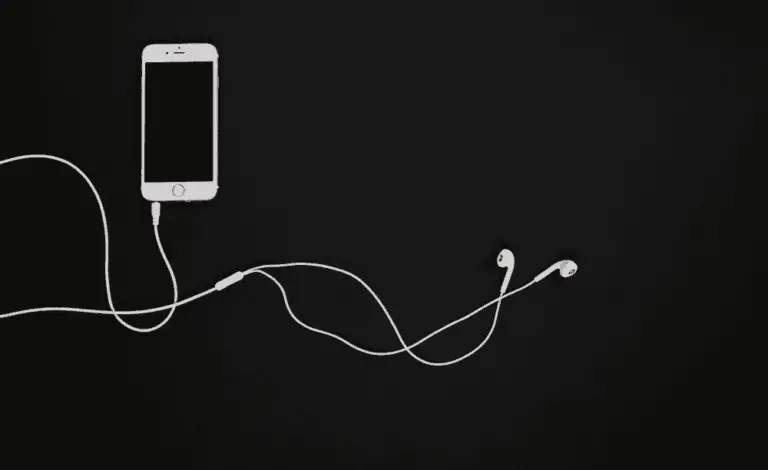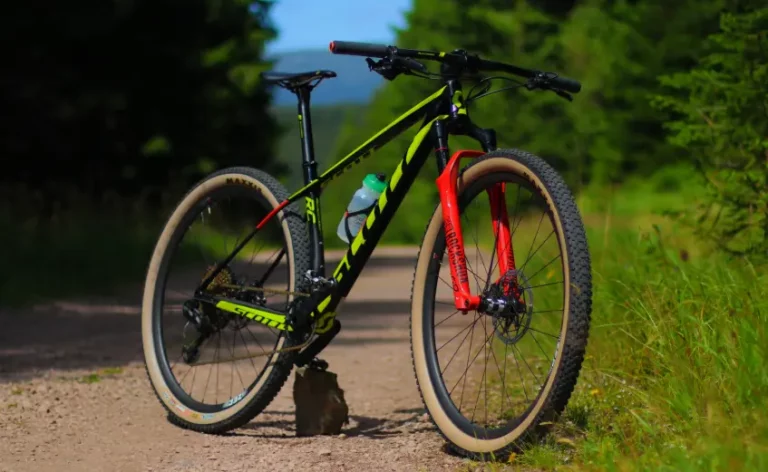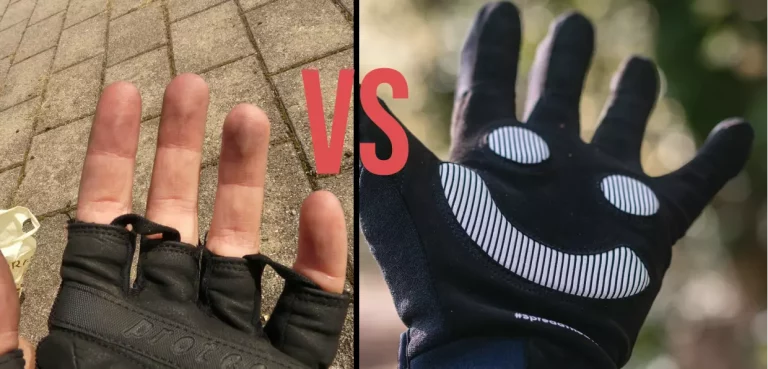How Dangerous Is Cycling? 10 Safety Tips (For Beginners)

Besides being fun, riding a bicycle is an excellent form of transportation and many people use it every day.
However, most people forgot that cycling can be very dangerous if the proper action is not taken.
In this article, I will help you stay safe when you are out on the road.
Table of Contents
Statistics On Cycling Accidents
Nowadays cycling is probably much safer than you think. But first, let’s see what the stats say.
The number of bicycle accidents in the United States is 846 per year. Which is very low compared to other traffic participants. Car accidents 35 000 per year, motorcycle accidents 5 114 per year, and pedestrian accidents in the traffic 6000 per year.
Looking at the statistics cycling is actually one of the safest transport vehicles.
Yes, it can be dangerous but if you apply all the tips I will share with you, you can drastically reduce the chances of an accident.
Top 7 contribution factors for cycling accidents
| Contributing Factor | Percentage |
| Solo (Fall) | 45% |
| Motor Vehicle | 18% |
| Other Bicycle | 17% |
| Animal | 8% |
| Other | 7% |
| Parked Car | 4% |
| Pedestrian | 1% |
As you can see in the table above, solo falls caused more accidents than any other contributing factor.
That means that most bicycle accidents are avoidable.
10 Important Tips For Staying Safe When Cycling
It is important to know some of the basic things when it comes to cycling safety cause maybe some of the things will save you one day.
1) Always Wear A Helmet And Gloves
According to a Brain Injury study out of 76,032 injured cyclists, only 22% wore helmets. Which is a very low percentage in my opinion.
If you wear a helmet while riding a bike, you can reduce your chances of getting head and neck injuries by more than 50%.
When it comes to gloves they are excellent for saving your hands cause the natural human tendency is to put the hands in front when falling.
Especially at the higher speeds if you don’t wear gloves your palms will be completely ruined.
2) Use Signals
Signals are a must-have for good communication in traffic. As cyclists, we have to signal where we want to go just like we do when driving a car.
Otherwise, it can be dangerous because cars and other bicycles don’t know when we’re going to stop or pivot.
It is very simple just let others know what you are about to do. I usually point with my hand in the direction I want to turn or stop.
3) Get Visible
Lack of visibility is the number one cause of accidents between cars and cyclists.
You want to make sure that anyone involved in traffic can see you, especially cars. No matter how bad the conditions are.
There are two main things you can do to get more visible in traffic
Use the lights (both front and rear). This means that during the evenings and on gloomy days, you will be seen more easily and they can react much faster. I usually turn them on only at night time, cause I didn’t find them very useful during the day.
It is also a law in some countries to have them on your bicycle.
Wear shiny colors like fluorescent green, blue, orange, red… This is not a must-have thing to do but it can help others to see you more easily from all sides, not just from the front and the back.
4) Stop At Red Light
This might sound stupid but I find that many people don’t know this including me when I was a beginner.
I used to think that traffic lights are only for cars not for bicycles which is a big mistake.
You need to stop at every single red light and stop sign like everyone else. Cause you never know when someone will out of nowhere run over you.
5) Bring Phone With You
In tough situations, the cell phone will be your best friend. You never know when something will happen especially if you are in the middle of nowhere.
On your phone, you can check the map if you are lost or call help if the accident occurs.
6) Keep Distance From Cars
I suggest you keep at least 1,5 meters (5 feet) distance from cars even if the car is parked.
Because if you are too close to the car they can suddenly go in reverse and you won’t have time to react.
Or they will just open the door and you will not expect it.
7) Make Sure Your Bike Is In Good Condition
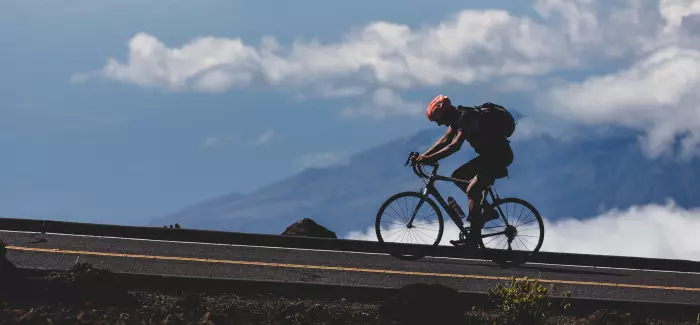
Before every ride, you want to make sure that your bike is working properly. There is nothing worse than something going wrong in the middle of the ride.
Here is a quick list of things you need to check before leaving the home.
- Make sure your tires are inflated
- See if the lights work properly
- Test your brakes (both front and rear)
- Set the saddle angle and hight
- Make sure the chain is moving good
You also want to have a basic repair kit with you if something does happen.
For instance, to fix a flat tire, if you need to wrap handlebars, tighten up loose bolts, and reattached a slipped chain.
8) Never Go Against The Traffic
Always keep to the right side of the street because cars will expect you there.
Cycling against the flow of traffic causes 3 times more accidents than riding in the same direction as other vehicles.
Even If you are involved in an accident, a car hitting you from the back is a lot less damaging than a crash from the front.
Also, try to ride at the same speed as the traffic is moving. I know this is most of the time impossible to do but when you get the chance do it.
Since they don’t have to pass you, there is a lower chance of an accident.
9) Keep Both Hands On The Bike
Even if you are an experienced cyclist who knows how to ride without hands.
I suggest you keep both hands on the handlebar because it is much more balanced and you will be able to brake much faster in case of emergency.
It is especially important if you are riding your bicycle in an area where there are a lot of cars and other vehicles around you.
10) Bring Water With You
Hydration is a very important thing especially for cyclists due to a large amount of sweating.
If you are going on a longer ride (1+ hours) you should at least bring 1 water bottle with you.
This is very important, especially for mountain bikers and bikepackers since they can stay without water for a few days.

